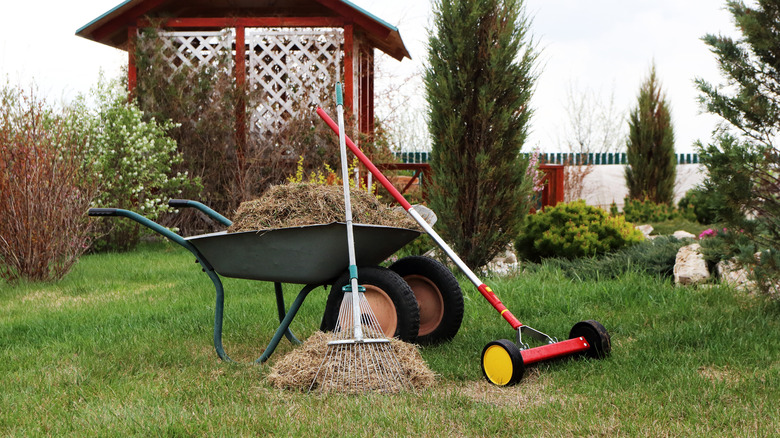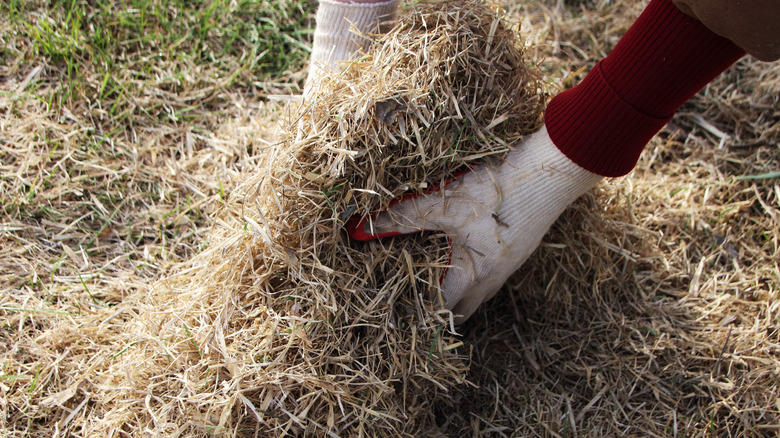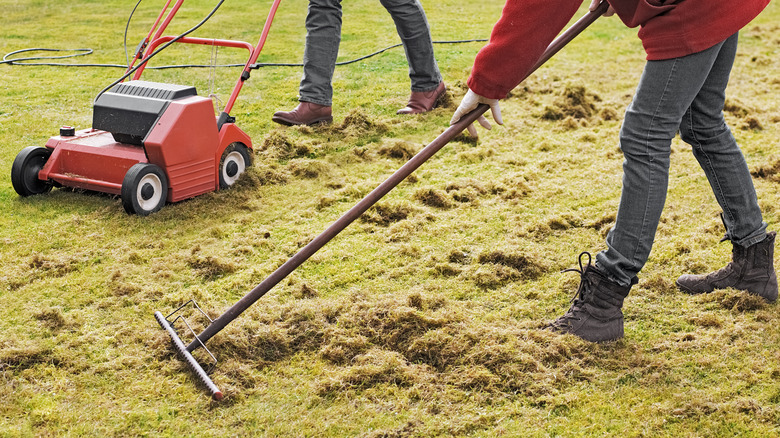What Does It Mean To Dethatch Your Lawn?
You've worked to get your lawn to green up, and still, it's lagging behind the neighbors' grass. If you are like many people, you've put a significant amount of time into fertilizing, weeding, and cleaning up the lawn itself, but that may not be enough to give it everything it needs to look its best. You may wish to try a few natural lawn care tips to help improve its look and feel, too.
When all of this isn't helping, and your grass feels spongy when stepping onto it, you may have too much thatch on the soil. A good test to see if you have a lot of mane buildup on the surface is to try to stick your finger into the dirt. According to Scotts, if it is too hard for your finger to penetrate into the soil, there's likely too much thatch present. What does that mean, and how can dethatching fix your lawn?
What is thatch anyway?
It's not uncommon for lawns to develop a thick layer of thatch, which is often a compacted layer of plant material that lays on top of the soil at the base of the grass. According to Lawn Love, it may be made up of dead blades, roots, leaves, and other organic matter that collects over time. It's not always possible to see from just looking at your lawn, but if you get down and move between the grass blades, you may see it.
When this layer is too thick, it doesn't allow enough moisture or air to penetrate into the soil, limiting proper growth and impacting its health. Sometimes it allows for too much water to remain instead of evaporating, which creates disease risks. You may have too much material if you have weak grass blades, yellowing or dull coloring, or increasing dry spots. It's important to recognize that problems with fungal disease or insects could also be an indication of the need to dethatch.
How does dethatching work, then?
Dethatching is the process of pulling up as much of that dead organic matter as possible to allow for better airflow in the soil. According to Pennington, there are several ways to this process. You could just use a rake designed for dethatching and some muscle to grab and remove the material. This is best for a lighter approach rather than a more thorough process.
Another option is to use a power rake which is much more like a lawnmower. This is best for lawns that can handle a deeper process. A vertical mower, or verticutter, is another option and is designed to remove most of the thatch and often some grassroots. Use this method when the grass is very thick and needs a more significant update. You can also turn to your lawn care professional for soil testing and more professional-grade services, especially if you don't want to buy or rent the equipment needed for this job. Doing this type of work could improve your lawn, boosting your home's curb appeal; you're not only giving the soil a new chance but also adding value to your property.


